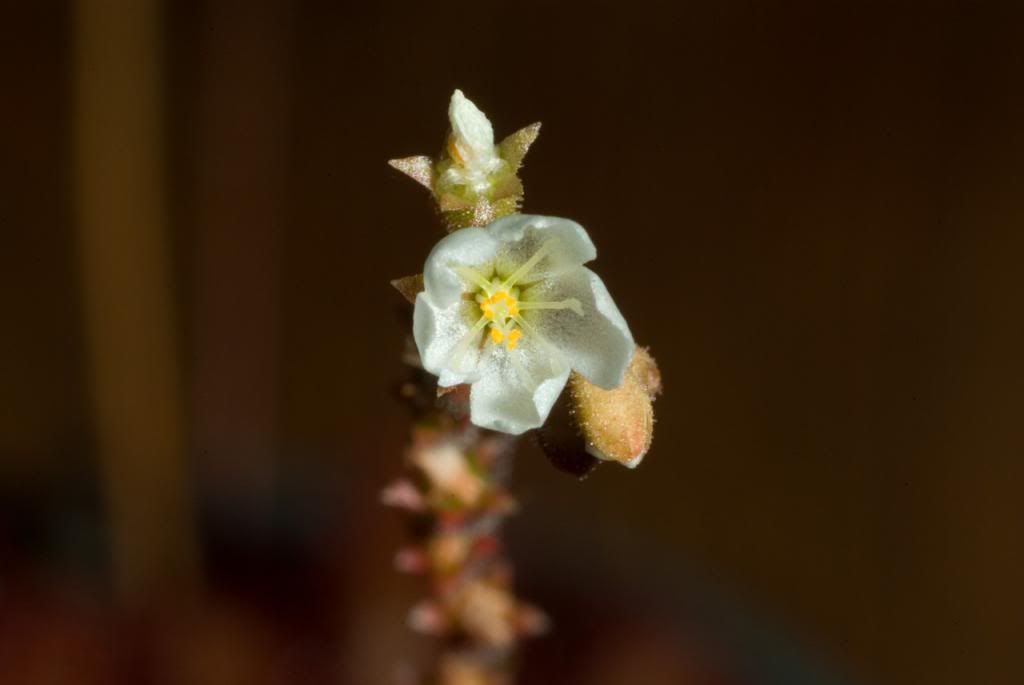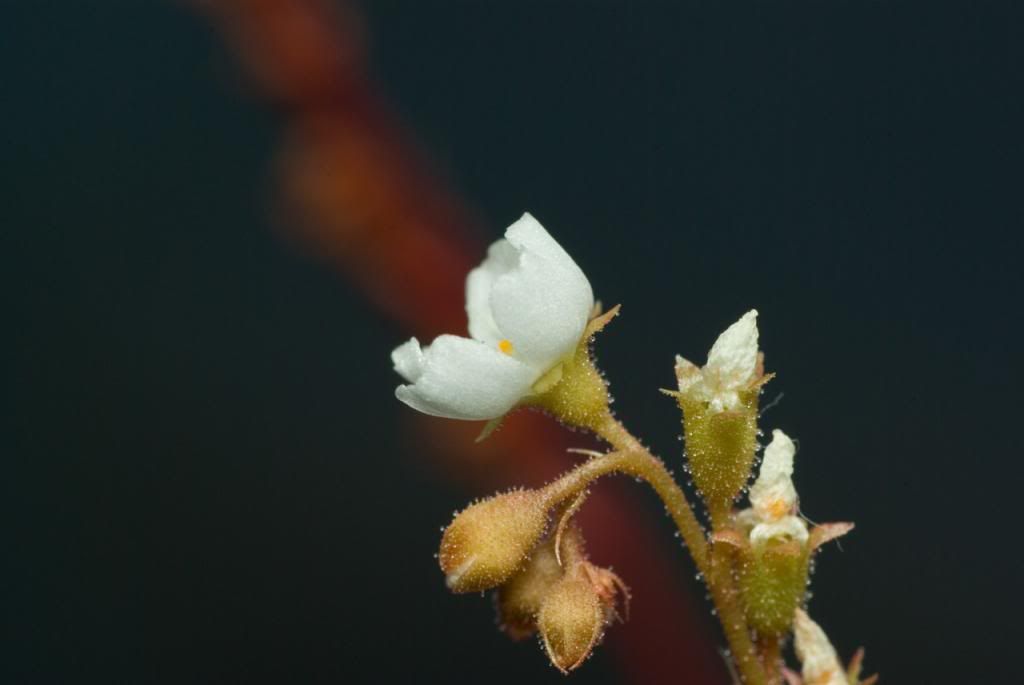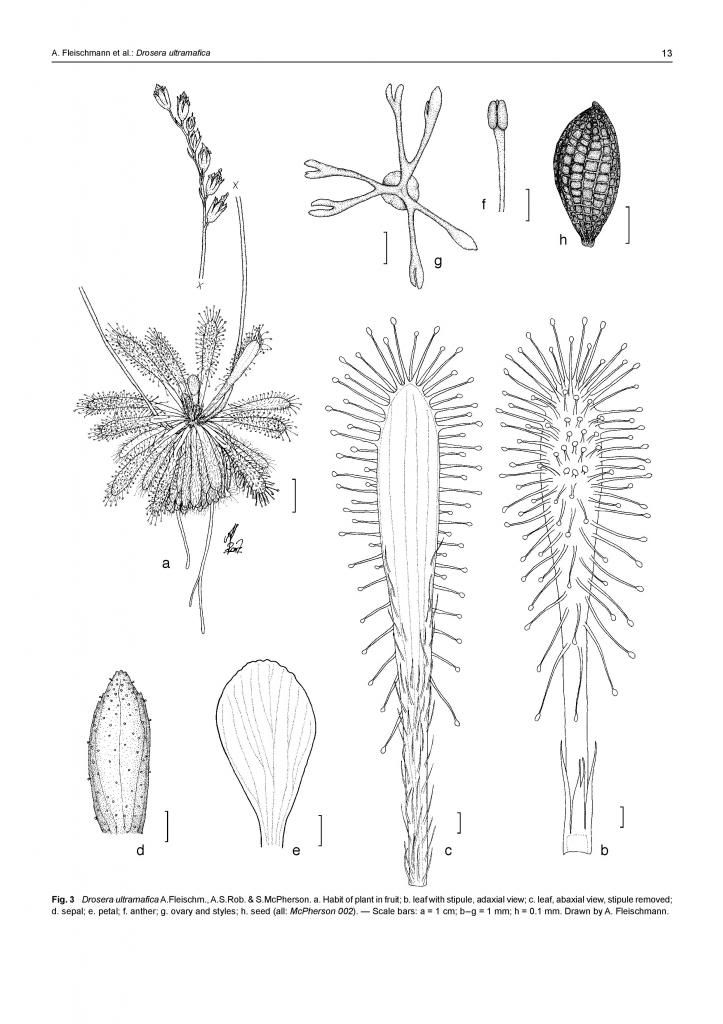Post by Not a Number on Nov 30, 2012 21:29:32 GMT
Just before summer I acquired from a friend some recently deflasked Drosera alleged to be D. ultramafica. Since the plantlets was not rooted I left it in water until one was grown out enough to pot.
After repotting and allowing the plant to grow out some I attempted to confirm the species from the type description and comparative key as written up in Drosera ultramafica (Droseraceae), a new sundew species of the ultramafic flora of the Malesian highlands by Fleischmann, A.; Robinson, A.S.; McPherson, S.; Heinrich, V.; Gironella, E.; Madulid, D.A. published in Blumea - Biodiversity, Evolution and Biogeography of Plants, Volume 56, Number 1, April 2011 (see www.ingentaconnect.com/content/nhn/blumea/2011/00000056/00000001/art00004 for text).
The more I looked at the plant the more like D. spatulata it seemed. A few key characteristics of D. ultramafica were missing, namely: lack of semi-erect leaf growth and lack of red stipules.
The plant eventually began to flower. I was unable to catch any of the white petaled flowers open so I did not examine the flower structure.
However the structure of the scape was closer to the description of D. ultramafica than that of D. spatulata, e.g. hairy at the base, subglabrous to glandular in upper part vs covered with short-stalked glandular trichomes, sometimes hairy at the base.
It has come to my attention that D. ultramafica has been hybridized with D. spatulata and inadvertently some that hybrid seed was distributed from various seedbanks. Thus D. ultramafica × spatulata hybrids are in cultivation as D. ultramafica.
I'm uncertain as to the exact source of the plant I have in question. It is unknown to me if it was propagated from seed in-vitro or was purchased in-vitro from one of the sources in Europe. Perhaps if my friend should see this (just started graduate school) he could clear up the origin.
My to my surprise the flower is generating seed. Examination under a toy USB microscope reveals that the seeds have a reticulate texture vs granulate for D. spatulata (from Fleischmann et al's paper).
Here are some photos:
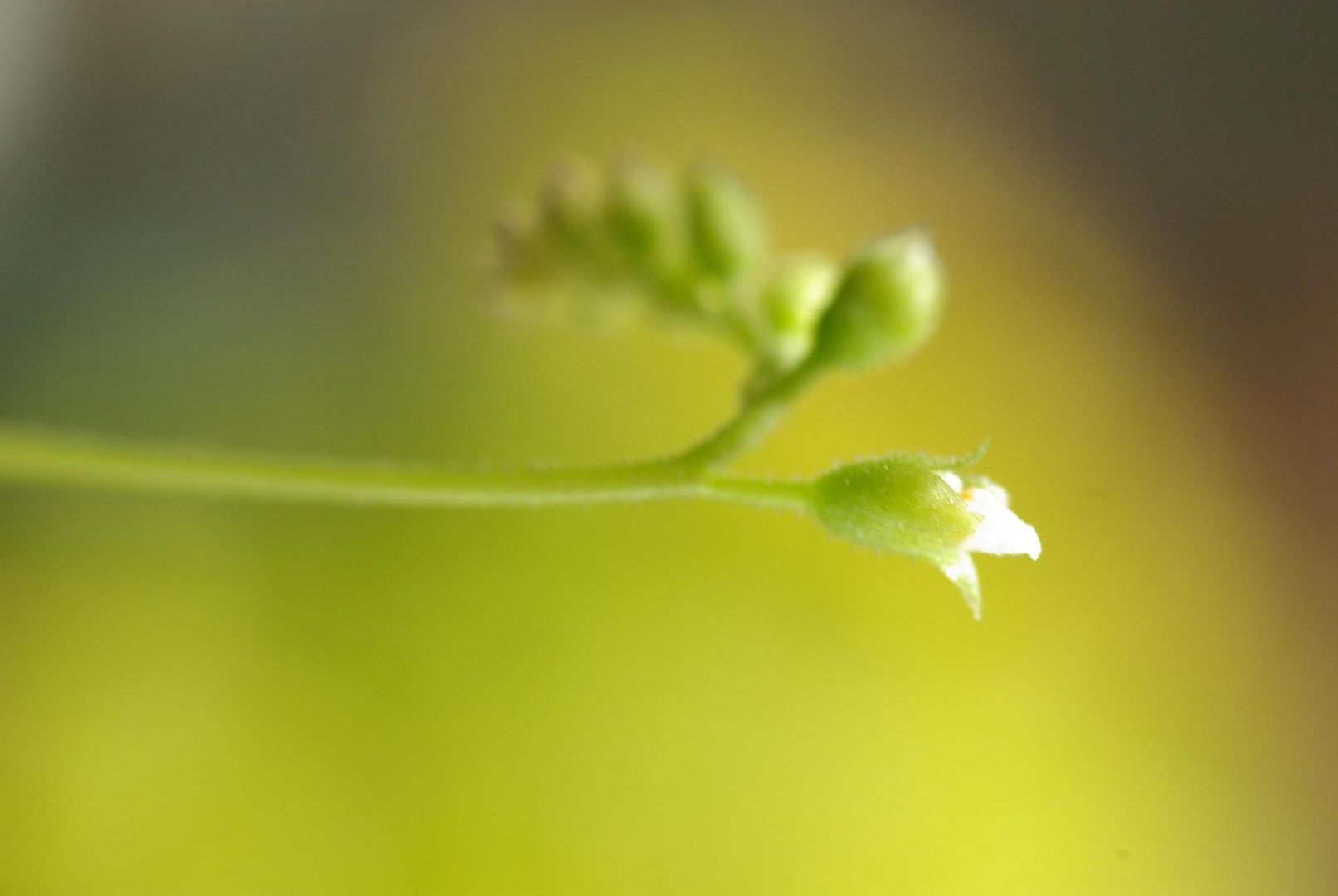


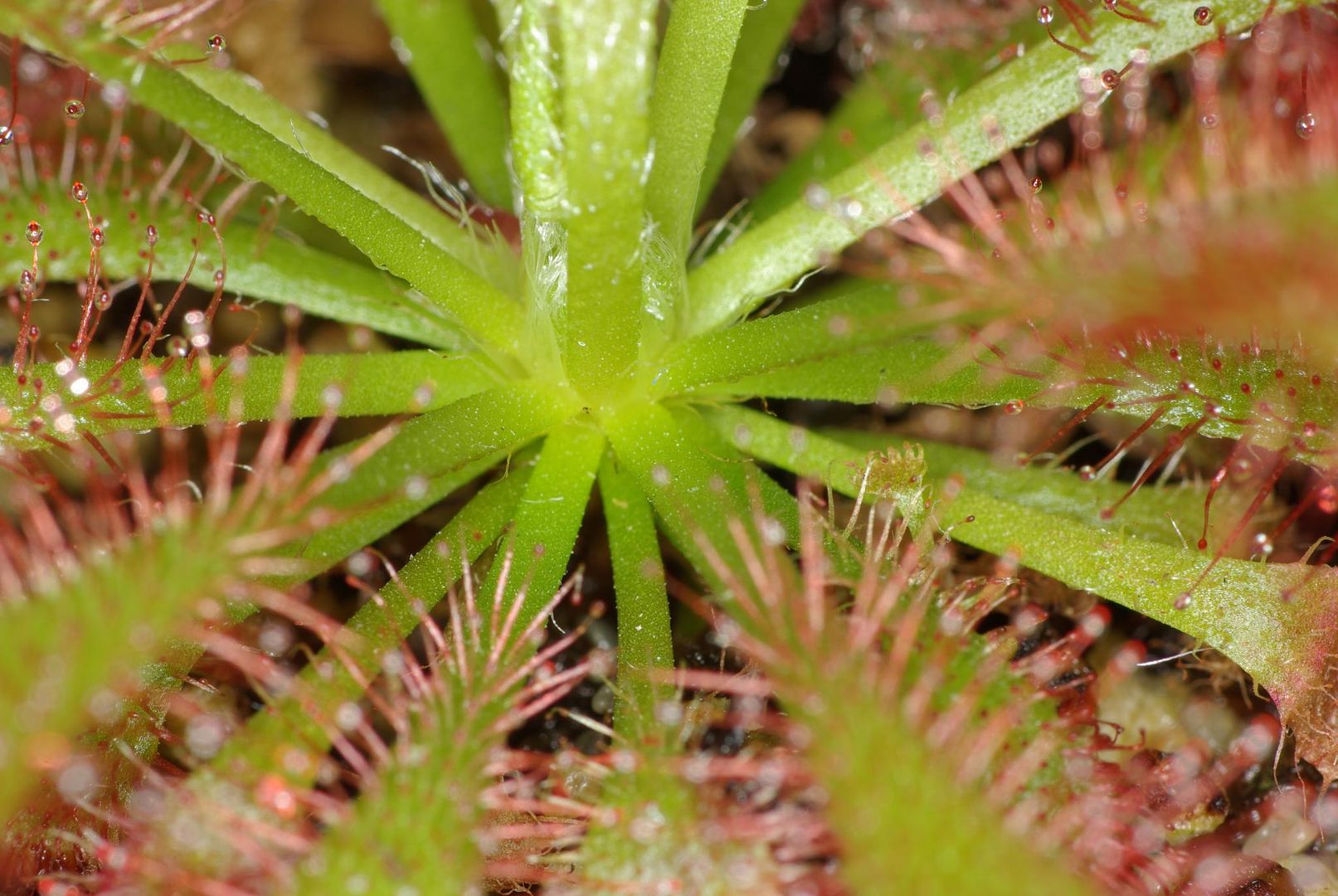
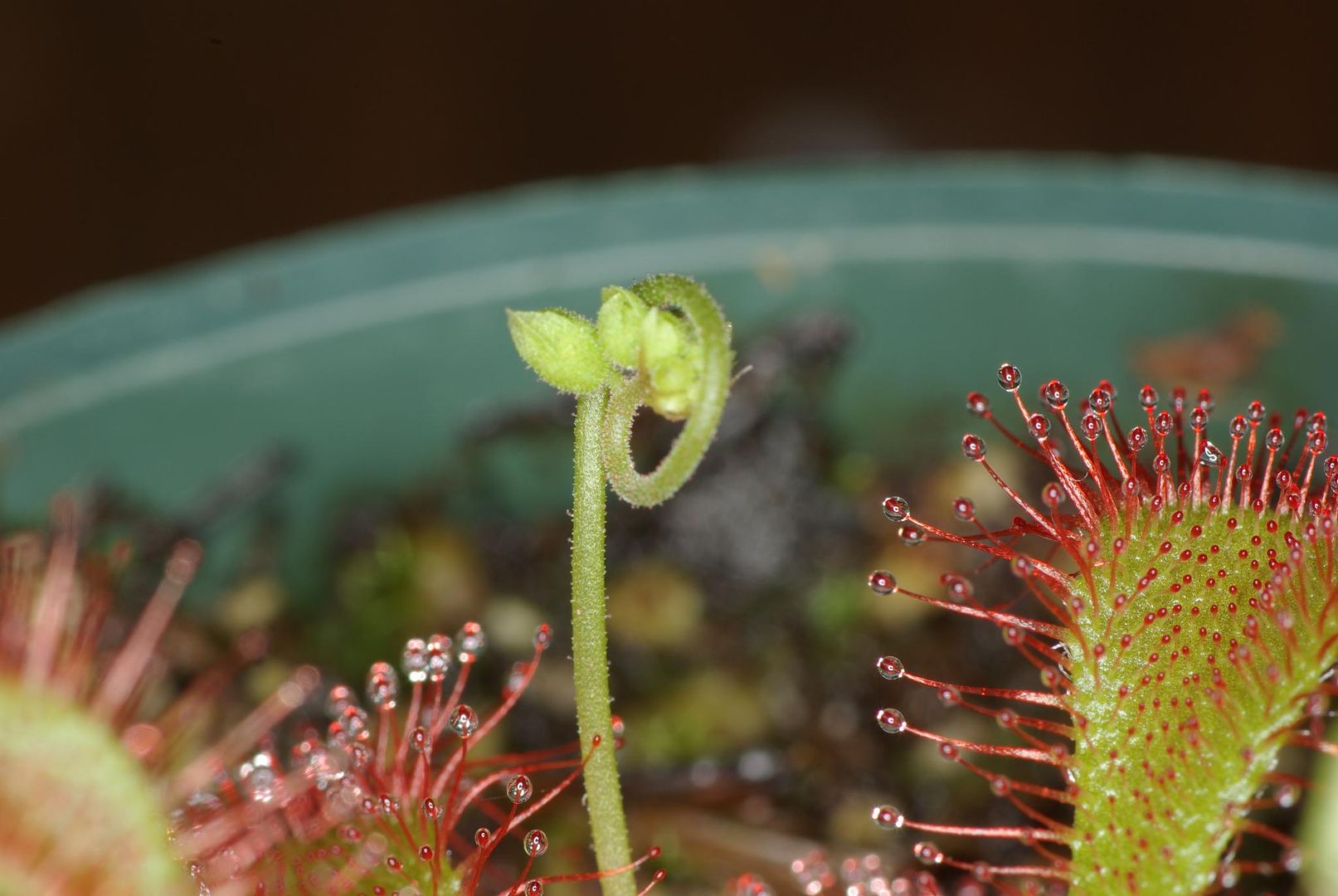
note the lack of red stipules and the lack of short-stalked glandular trichomes on the stalk.
Here is one of the seeds:


as you can see despite the poor quality of the images the texture appears to be reticulated.
For comparision here is a seed of D. ultramafica from the ICPS seedbank:
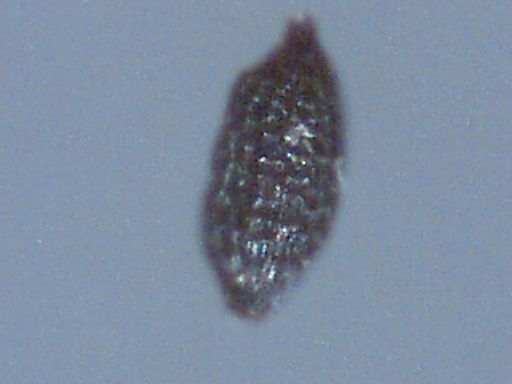
This pretty much matches the type drawing.
However for comparison here several D. spatulata seeds:
D. spatulata var gympiensis (source Ivan Snyder)
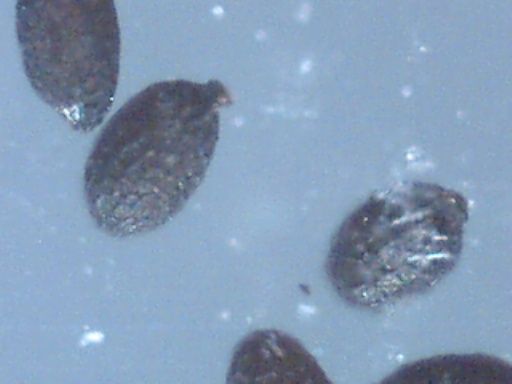
D. spatulata "Anapara, Gumfields, NZ" (source Ivan Snyder)

And here are some beautiful photographs by Makoto Honda
www.honda-e.com/A04_Seed%20Library/Drosera/D_spatulata.htm
All of these appear to be reticulated and not granulate as stated in the aforementioned paper on D. ultramafica. This just adds further to my confusion in trying to identify this plant. Are the seed of D. spatulata in general supposed to be granulate or just the D. spatulata in the region that D. ultramafica is growing?
I am sending some of the seed out to several other growers to determine if it is fertile or not. Whether this will cause more confusion or not remains to be seen
Any insight would be appreciated.
After repotting and allowing the plant to grow out some I attempted to confirm the species from the type description and comparative key as written up in Drosera ultramafica (Droseraceae), a new sundew species of the ultramafic flora of the Malesian highlands by Fleischmann, A.; Robinson, A.S.; McPherson, S.; Heinrich, V.; Gironella, E.; Madulid, D.A. published in Blumea - Biodiversity, Evolution and Biogeography of Plants, Volume 56, Number 1, April 2011 (see www.ingentaconnect.com/content/nhn/blumea/2011/00000056/00000001/art00004 for text).
The more I looked at the plant the more like D. spatulata it seemed. A few key characteristics of D. ultramafica were missing, namely: lack of semi-erect leaf growth and lack of red stipules.
The plant eventually began to flower. I was unable to catch any of the white petaled flowers open so I did not examine the flower structure.
However the structure of the scape was closer to the description of D. ultramafica than that of D. spatulata, e.g. hairy at the base, subglabrous to glandular in upper part vs covered with short-stalked glandular trichomes, sometimes hairy at the base.
It has come to my attention that D. ultramafica has been hybridized with D. spatulata and inadvertently some that hybrid seed was distributed from various seedbanks. Thus D. ultramafica × spatulata hybrids are in cultivation as D. ultramafica.
I'm uncertain as to the exact source of the plant I have in question. It is unknown to me if it was propagated from seed in-vitro or was purchased in-vitro from one of the sources in Europe. Perhaps if my friend should see this (just started graduate school) he could clear up the origin.
My to my surprise the flower is generating seed. Examination under a toy USB microscope reveals that the seeds have a reticulate texture vs granulate for D. spatulata (from Fleischmann et al's paper).
Here are some photos:





note the lack of red stipules and the lack of short-stalked glandular trichomes on the stalk.
Here is one of the seeds:


as you can see despite the poor quality of the images the texture appears to be reticulated.
For comparision here is a seed of D. ultramafica from the ICPS seedbank:

This pretty much matches the type drawing.
However for comparison here several D. spatulata seeds:
D. spatulata var gympiensis (source Ivan Snyder)

D. spatulata "Anapara, Gumfields, NZ" (source Ivan Snyder)

And here are some beautiful photographs by Makoto Honda
www.honda-e.com/A04_Seed%20Library/Drosera/D_spatulata.htm
All of these appear to be reticulated and not granulate as stated in the aforementioned paper on D. ultramafica. This just adds further to my confusion in trying to identify this plant. Are the seed of D. spatulata in general supposed to be granulate or just the D. spatulata in the region that D. ultramafica is growing?
I am sending some of the seed out to several other growers to determine if it is fertile or not. Whether this will cause more confusion or not remains to be seen
Any insight would be appreciated.





